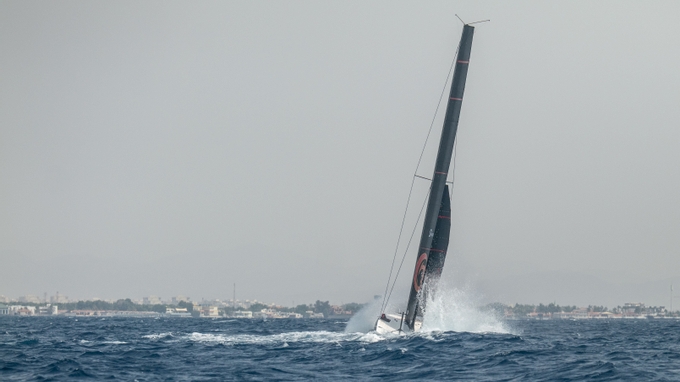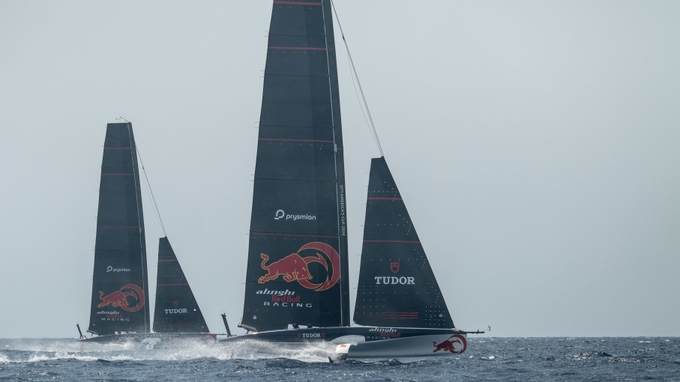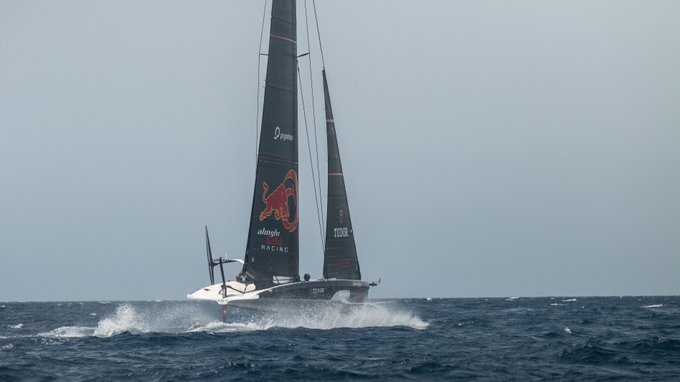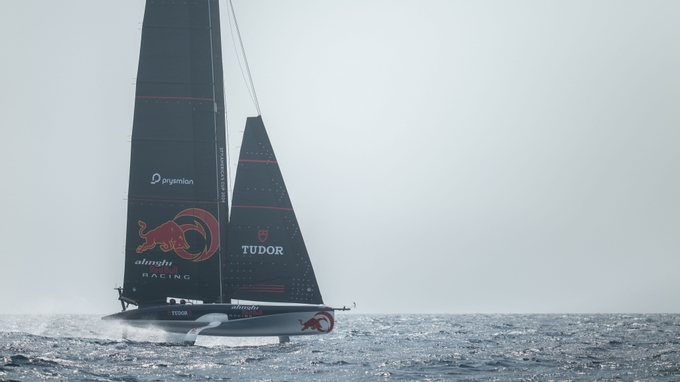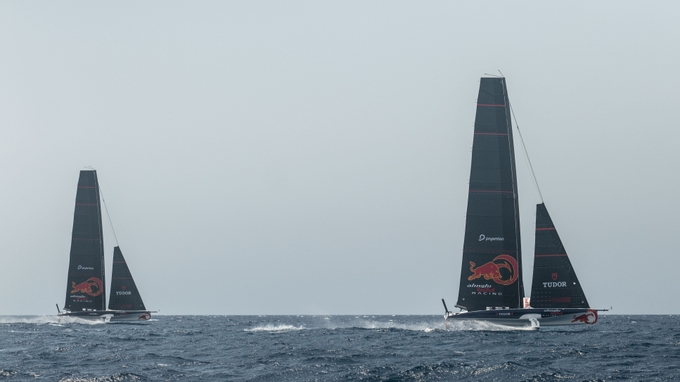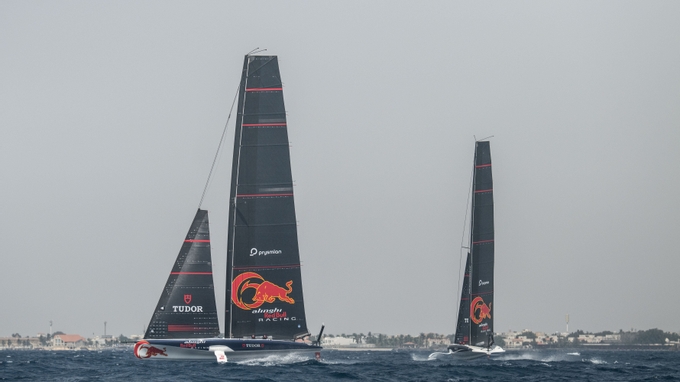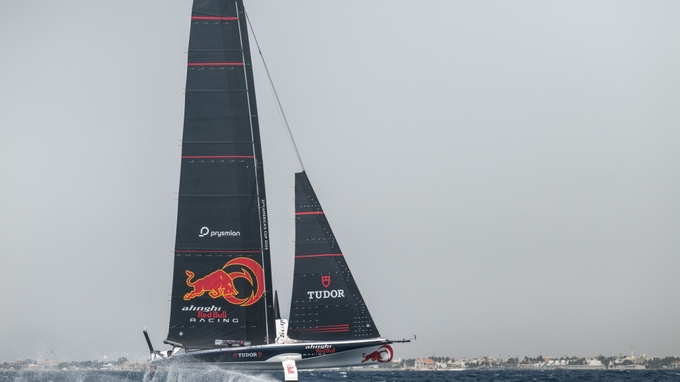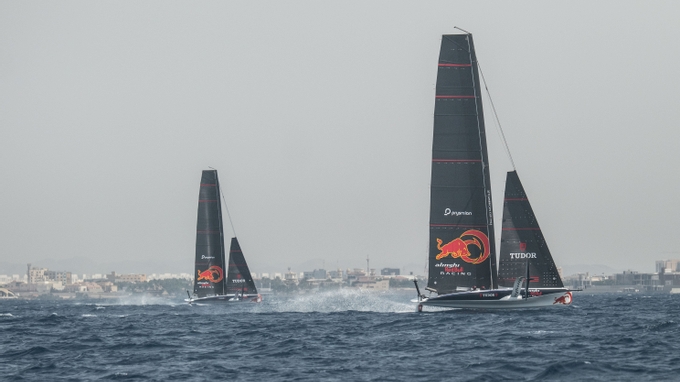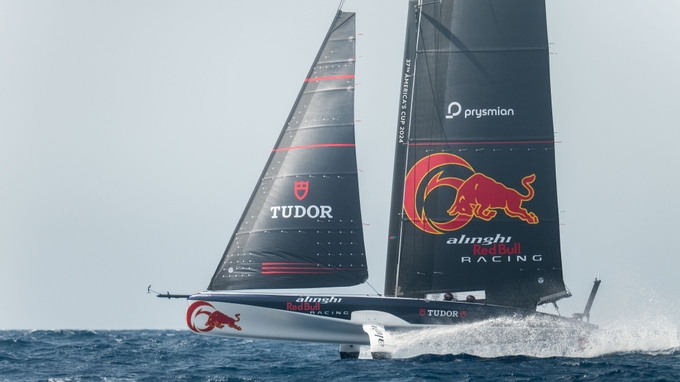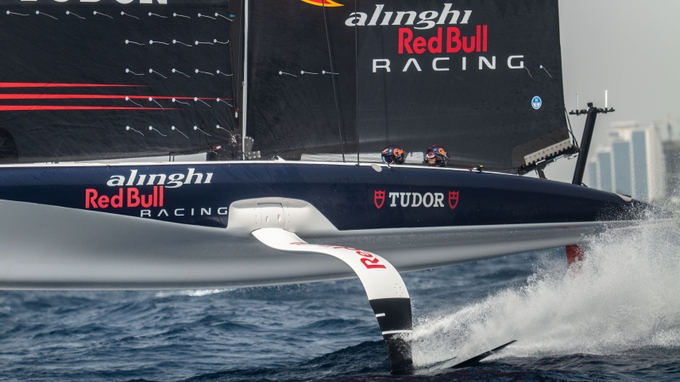DUELLING BULLS GO TO WORK ON THE RED SEA
Alinghi Red Bull Racing’s foresightful decision to keep their two AC40s in Jeddah, Saudi Arabia after the conclusion of the second Preliminary Regatta back at the end of November, paid handsome dividends today as the prevailing north-westerly breeze came in with a bang and the sailors were rewarded with 15-19 knots of solid Red Sea buster and a hearty, chunky wave formation for a thoroughly entertaining two-boat training session.
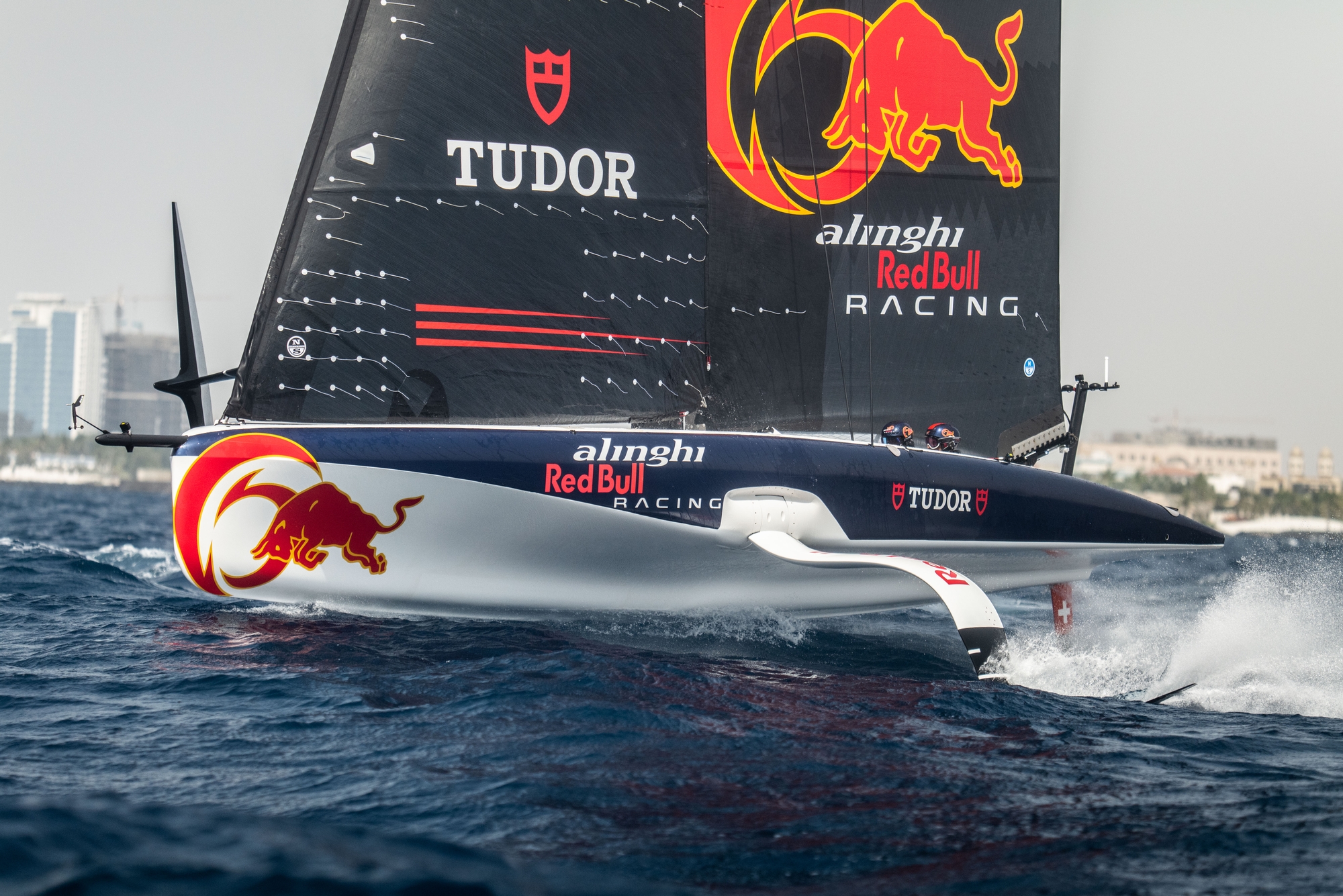
The crystal waters of Jeddah are as close to pitch-perfect when the north-westerly breeze blows, in a somewhat futile attempt to cool the arid city where temperature again were up at 33 degrees on the water and higher on-land. For the technicians of the Swiss team, it’s a mammoth job to keep on top of the systems and ensure they’re cool enough to handle the intense pressure that the sailors are demanding on the boats and several checks were made today below decks on stops.
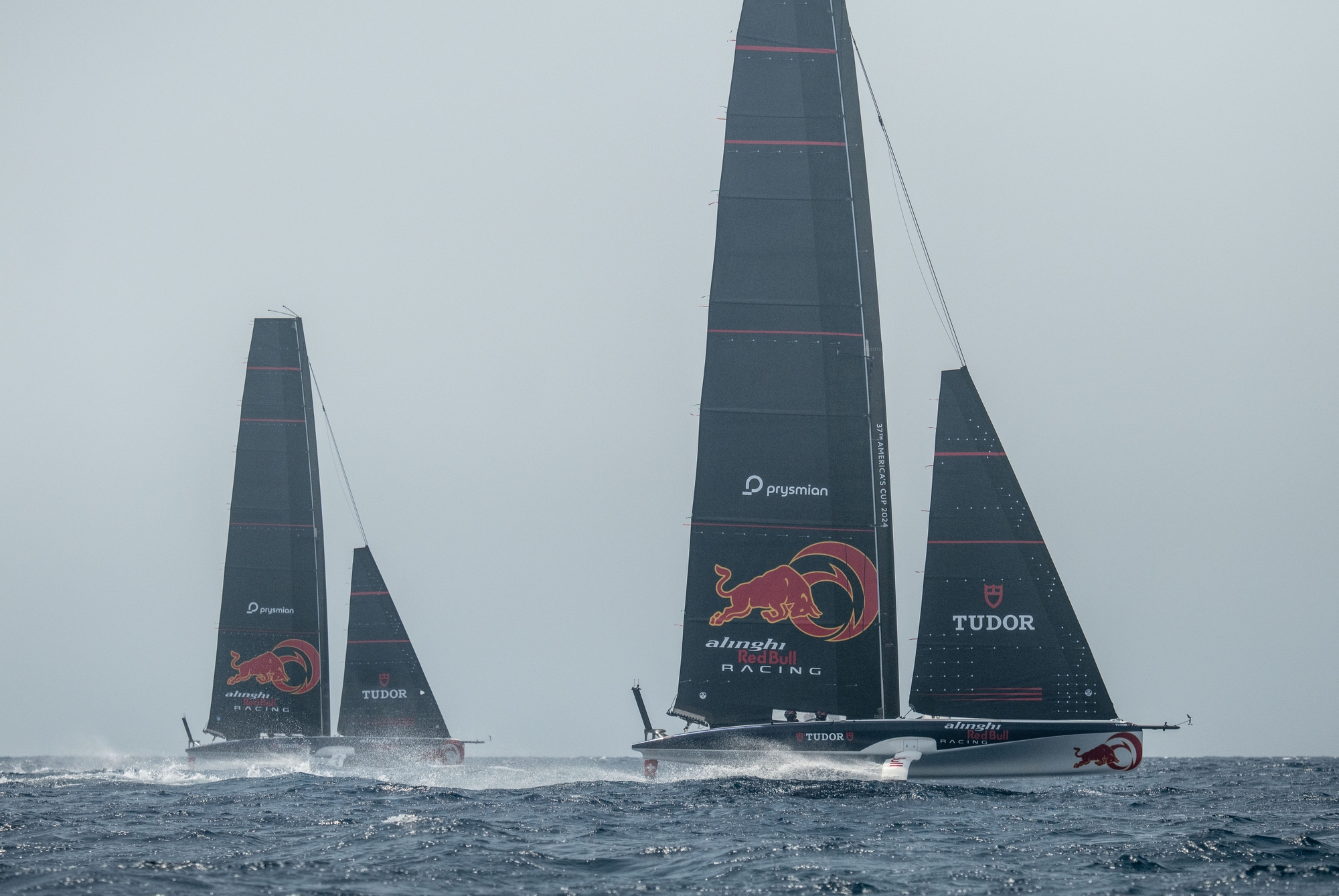
The coolest cucumbers in town though were Arnaud Psarofaghis and Maxime Bachelin who have formed an intuitive helming partnership in an almost perfect ‘ying and yang’ dynamic that has the rest of the Cup community taking notice. These two have ridden the hardest yards of this campaign, stayed at the task admirably and their performances on the water just get better and better.
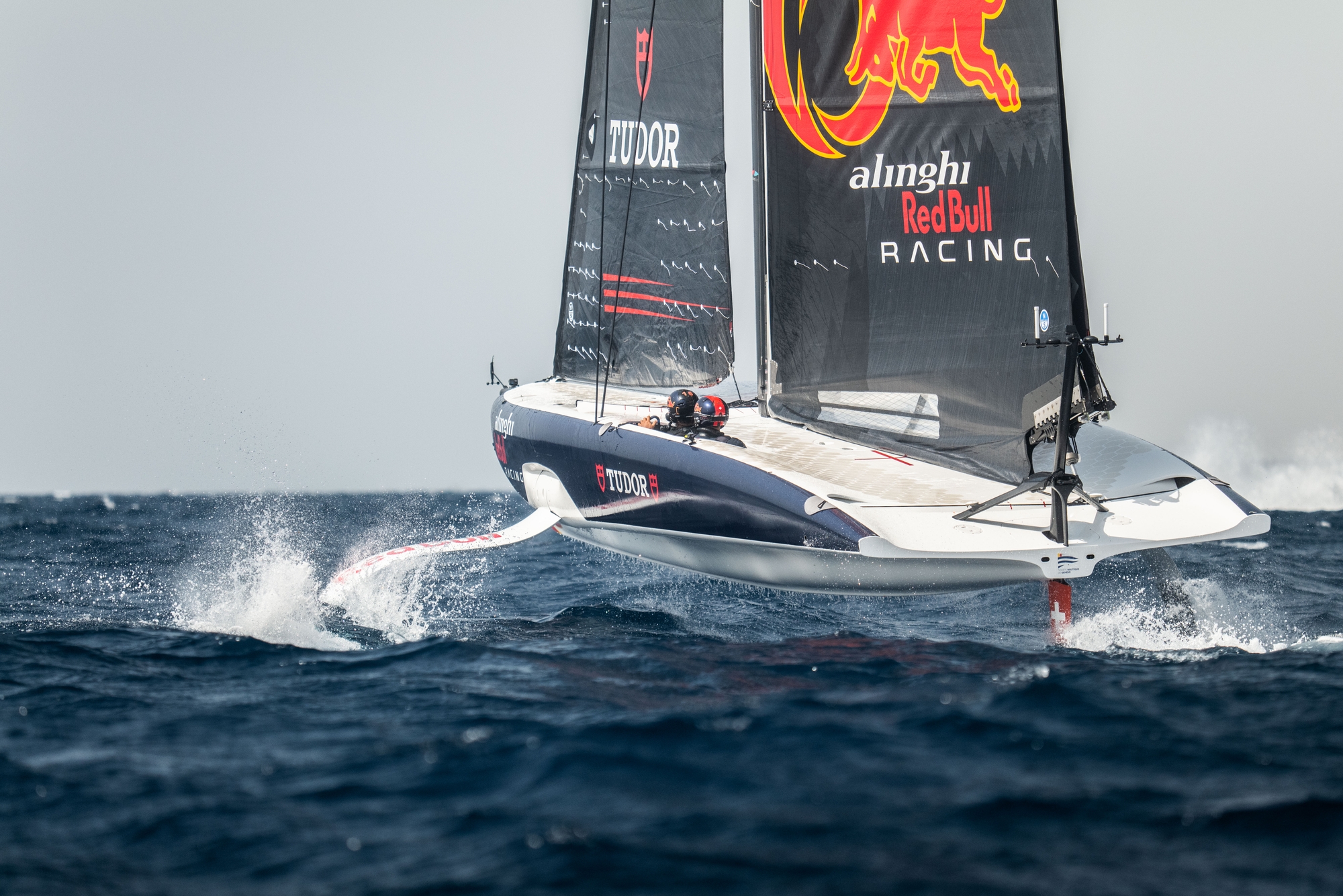
Today they were pushed hard by the wily foxes Dean Barker and Phil Robertson with honours pretty much even over the racing where getting the first cross was so important for the control and command position whilst in the pre-starts, the pressure was on for the Swiss pairing with them starting consistently on the port entry and having to attack relentlessly. Errors were forced on both boats and Barker used some monohull tactics (honed directly from the World Match Racing Tour that he dominated for so many years) whilst racing to sharpen up the pair that are most likely to be driving the new AC75 ‘BoatOne’ from launch.
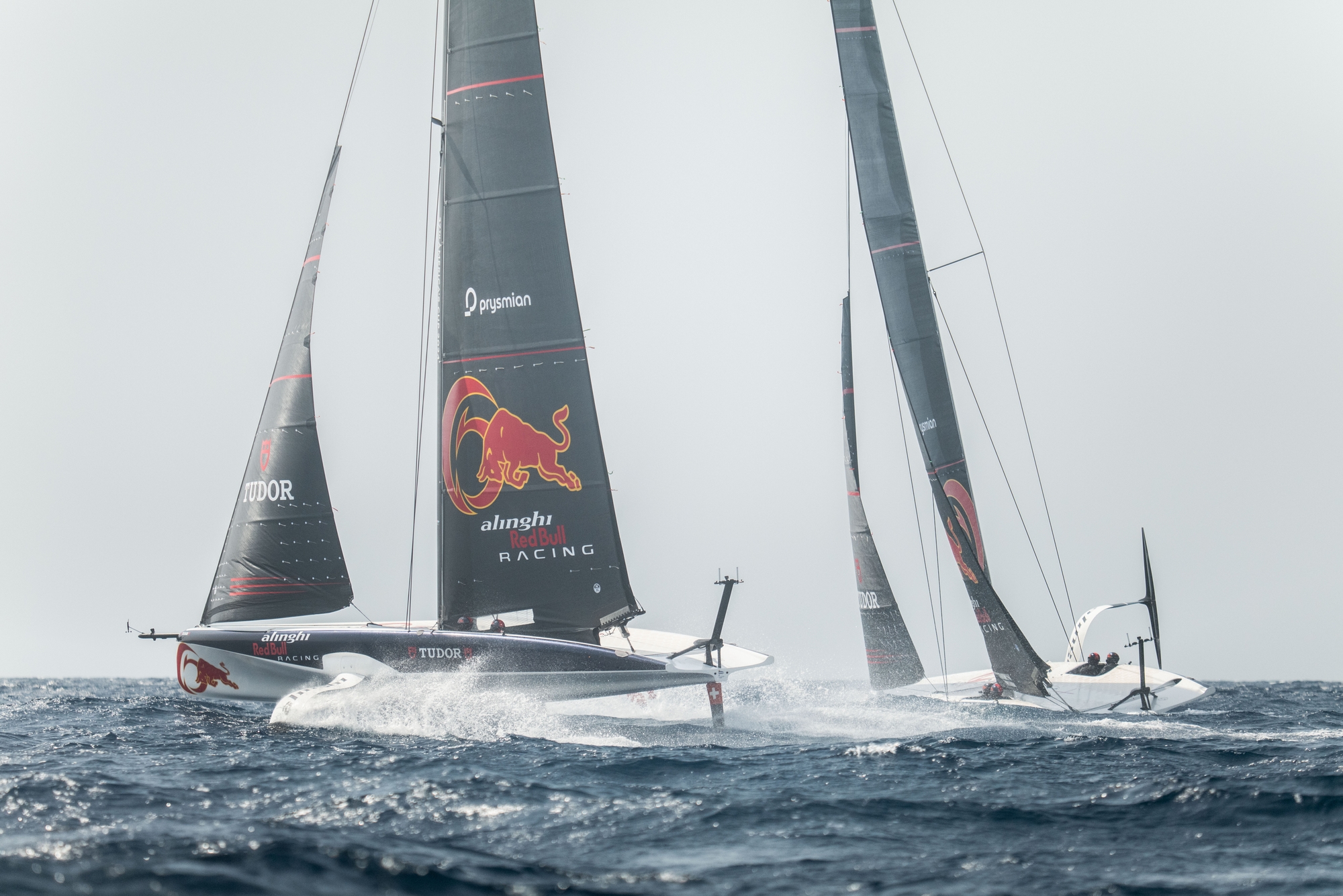
A brilliant session of high-octane pressure sailing with speeds into the 40-knot barrier, the main challenge through the session was the sea-state and staying on the foils, especially in the pre-start as such a determinant of positioning off the line and dictation of the subsequent racing. The recon team noted that mark deltas were consistently around 10-seconds which is phenomenal at this level and this pace and really shows just how far this brilliant young team have come. Yves Detrey, with a smile on his face, gave his usual superb interview after sailing today and spoke about the trajectory of the team saying: “I think a long way. Obviously, that's what we're here for, a lot of match racing, a lot of racing, and we are learning as a group and the entire team gets stronger and so the racing gets tighter, and I think today was a good example.”
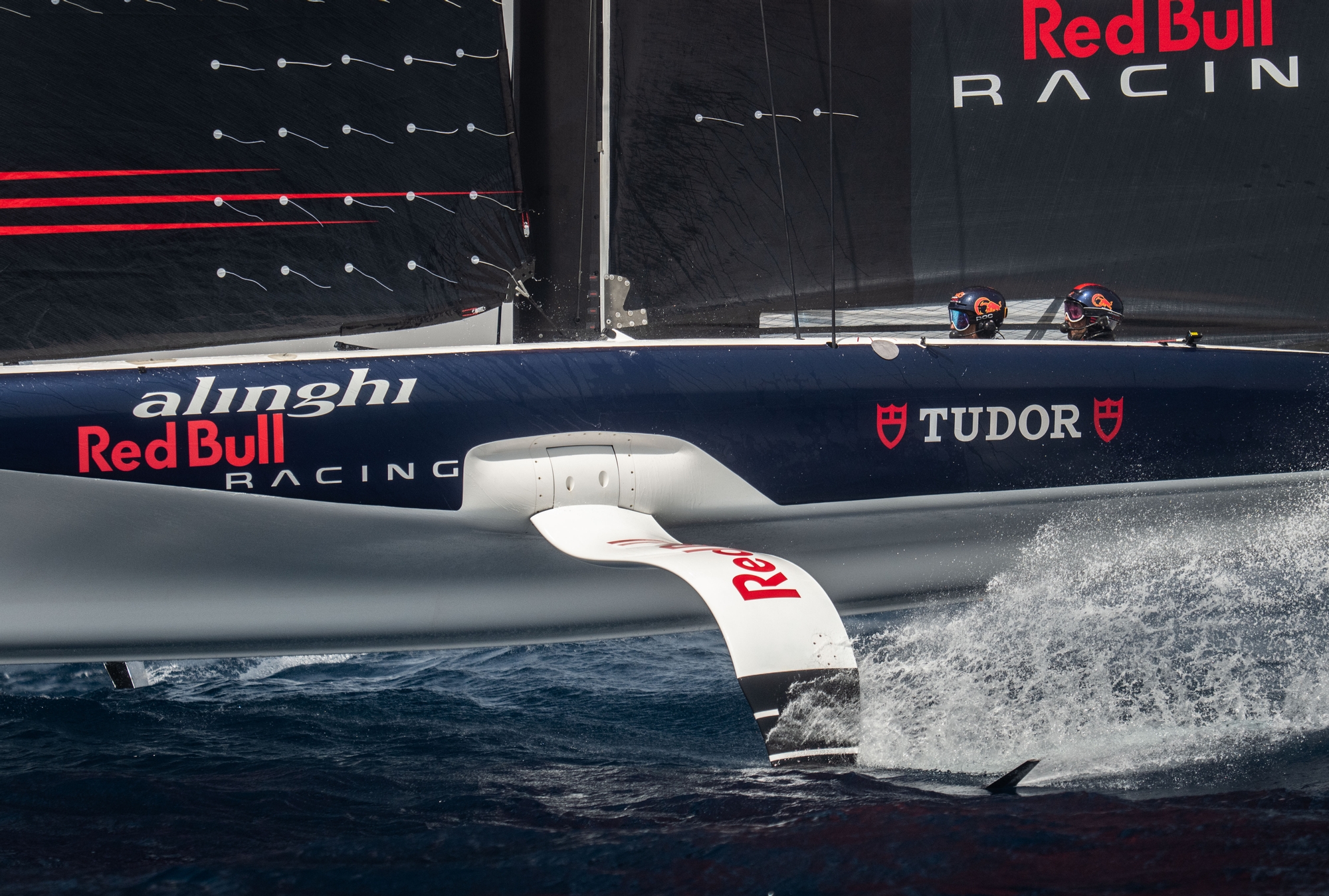
Yves is a catalyst of enthusiasm and summed up the day saying: “It was different. The change of conditions was actually quite fun. You know we had two light days and it's nice to sail in light conditions, but it's definitely a lot more fun when you get the speed and challenging conditions.”
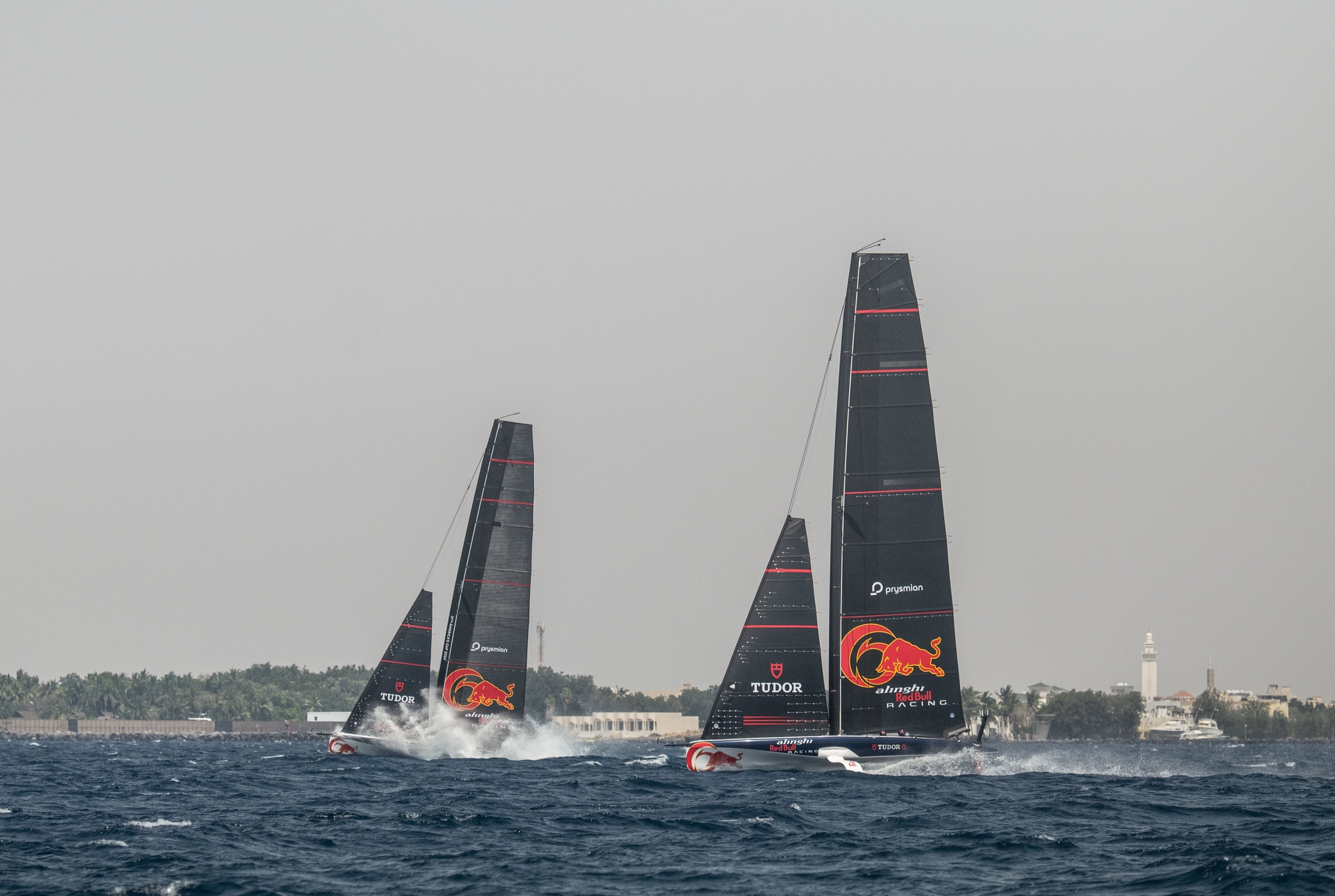
Talking about just how hard the AC40 is to sail in the more challenging wind strength, Yves smiled and commented: “I think it's keeping the boat up on the foil all the time...even if we’re trying to do manoeuvres with two boards down it's still very tricky and challenging to keep the boat always on the foil and as you saw we had some crashes during pre-start...but it's definitely challenging, obviously then it's all about getting off the line, have a clean start and ahead of the other and then manage the race course...I mean everybody's playing with their settings, you know it's all about the cant settings, jib sheet, mainsheet, it's not all about the traveller there's a lot of setting on these boats, the ride height as well, so everyone is playing hard on their settings to keep the boat up on the foils.”
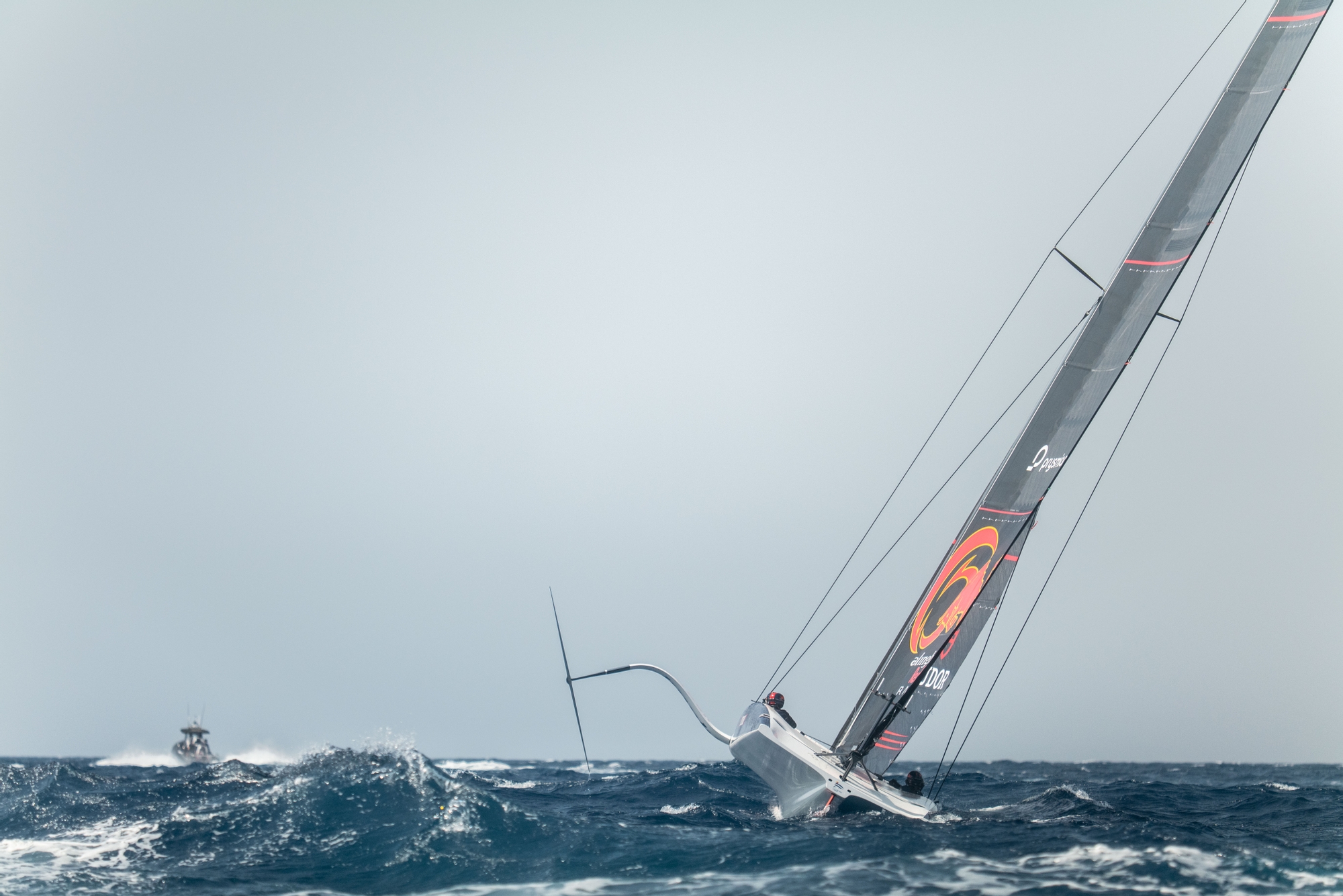
Everyone is looking forward to sailing the new AC75 at Alinghi Red Bull Racing and how the training on the AC40 relates and translates to the new boat is a thought on everyone’s mind. Yves gave a good, and wise insight borne from long experience, saying: “Obviously it's a ‘big bus’ as we like to call it, it's a lot different obviously (to the AC40) the radius are not exactly the same so yeah I think you don't need to repeat exactly what you learn from here or from the big boat, you just have to adapt yourself for different boats and that's the key.”
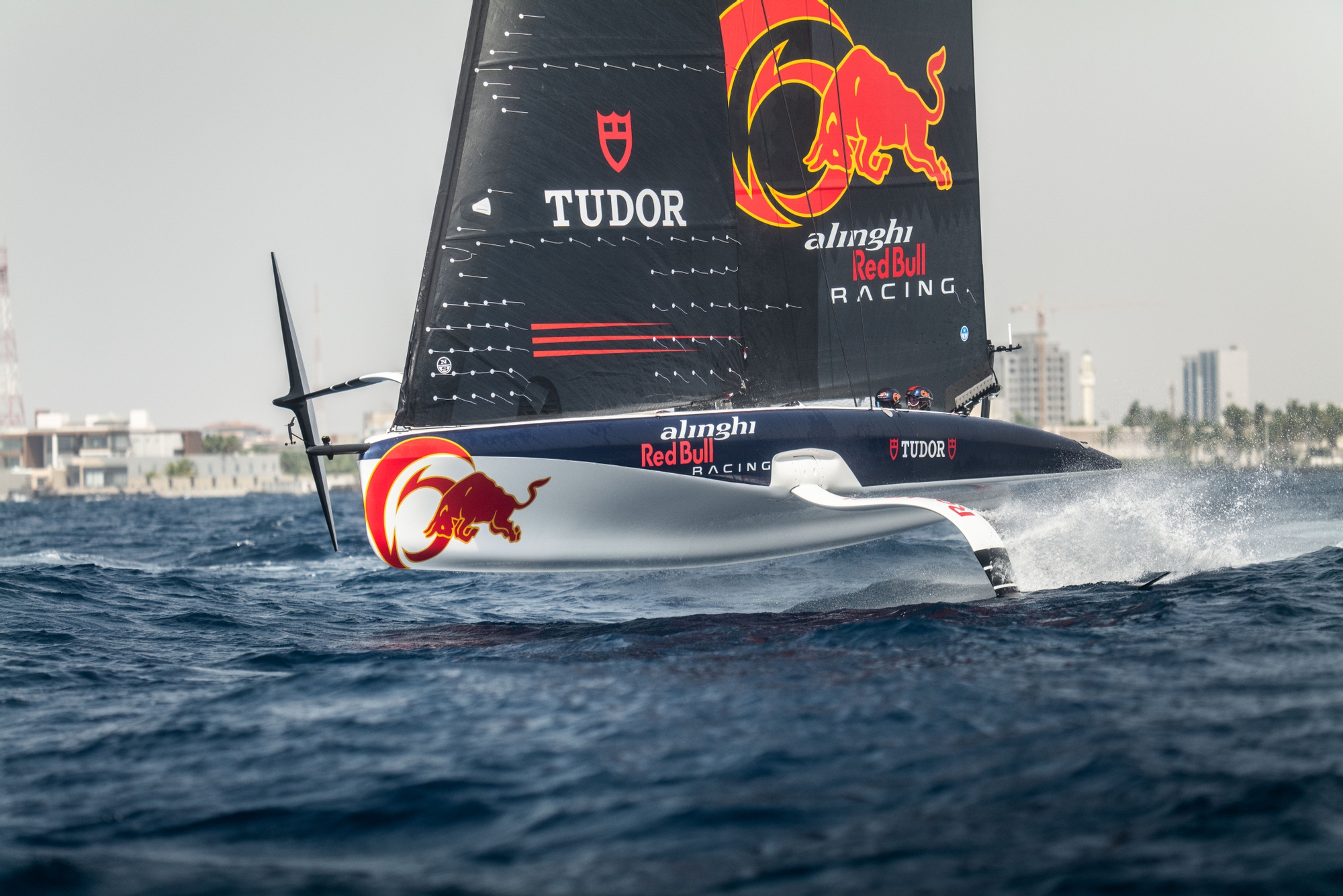
Ending the interview, Yves gave a great line about the challenges ahead saying: “I wouldn’t say flying a boat is easy, it's definitely challenging to fly boats and even the auto-pilot is struggling sometimes, so it's a work we still have to do in the next couple of months because obviously our new boat will come, and you know we have to learn how to fly this boat.”
The training goes on through the weekend for this enthralling, hard-driving programme. The Swiss bulls are leaving no stone unturned in their quest for the Louis Vuitton 37th America’s Cup. Impressive. (Magnus Wheatley)
On-Water Recon Report – Alinghi Red Bull Racing: Alinghi Red Bull Racing's AC40-4 (Red) and AC40-7 (Black) were rolled out at 09:15 and 09:40 respectively. Following standard systems checks off the dock, further work was observed on the FCS of the Black boat. The team docked out at 12:15. The crew swapped boats again, and the only change made to the crew combination was Yves Detrey replacing Nico Rolaz to trim on the port side of the Red boat. The day's sailing commenced with both boats equipped with full LE sail plans, with J3 jibs selected ahead of winds in the upper range, and an aggressive wind chop.
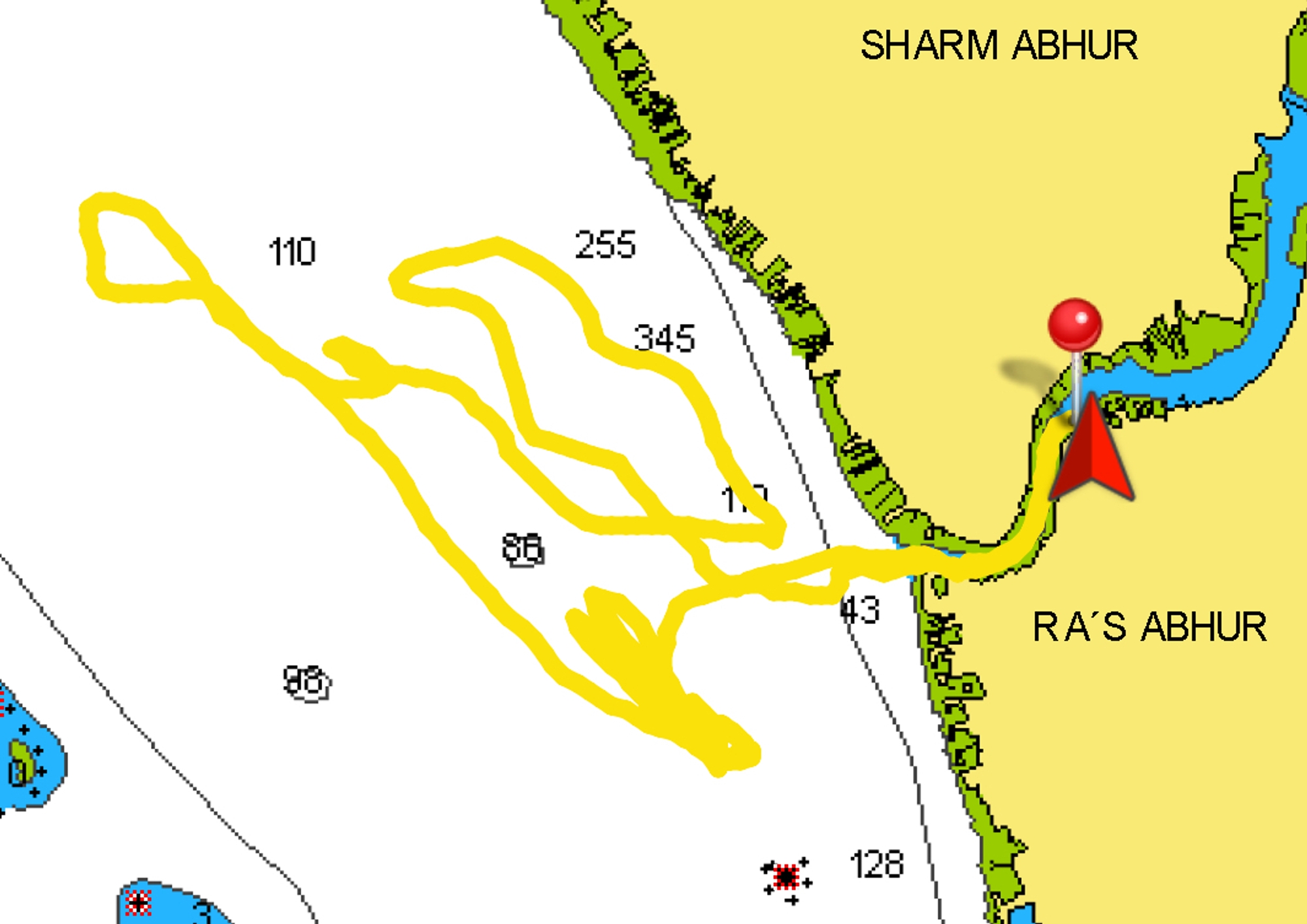
Stint 1 (12:45 – 12:59, 13-17.5kn 305° @ 12:40) Both boats engaged in free sailing upwind, then downwind, with the Black boat displaying some inconsistency through manoeuvres, touching down on multiple occasions. Red stopped to for a brief moment as techs jumped on board to attend to issues with the FCS, as Yves Detrey mentioned in the post sailing interview.
Stint 2 (13:08 – 13:31, 14-18kn 305° @ 13:05) The team set off upwind, sailing in parallel, but another brief pause a few minutes in saw Red dealing with persisting issues. The boats rejoined and continued on a long upwind, sailing in parallel, before turning downwind to sail to the course start line.
Stint 3 (13:35 – 14:06, 15-19kn 315° @ 13:35) The course was set at 305°, ahead of two pre-start practices, with a third start continuing into a one lap race (Race 1). Black entered on port for all starts. Race 1 was won by Red, who covered and controlled the race after the first crossing post-start.
Stint 4 (14:20 – 14:47, 14-18.5kn 315° @ 14:15) This stint saw another two pre-start practices with a third continuing into a race. Black entered on port for all starts, winning Start 4, and starting alone for Start 5, as both struggled with boat handling and a touchdown which Red could not recover from. Start 6 / Race 2 (1 lap), saw Black start to windward and ahead to leeward after the first tack, using this position to lee-bow Red and force a tack. Black controlled the race from this moment and took the win at the downwind finish. A battery change was carried out ahead of the last stint.
Stint 5 (15:00 – 15:32, 15-19kn 315° @ 15:00) Start 7 was won by Red, crossing the line ahead of Black and remained in front at the first crossing. Both boats came back to the line for Start 8 / Race 3 (1 lap), with Black entering on port. On the final approach to line, Red luffed Black above committee end and started ahead and to windward, allowing them to control the upwind, with Black rounding less than 10 seconds behind at the windward mark. Red extended the lead downwind to finish at the leeward gate, after which the team sailed back to Obhur Creek to drop sails and end the sailing day.
The team docked in at 15:50, after nearly four hours on the water and 130 minutes of intensive sailing. Despite the challenging conditions, 94 manoeuvres were observed of the Black boat at a 76% fully foiling rate.
